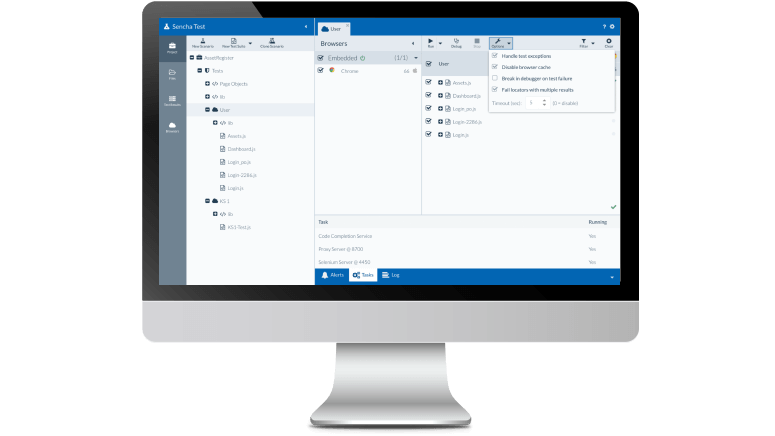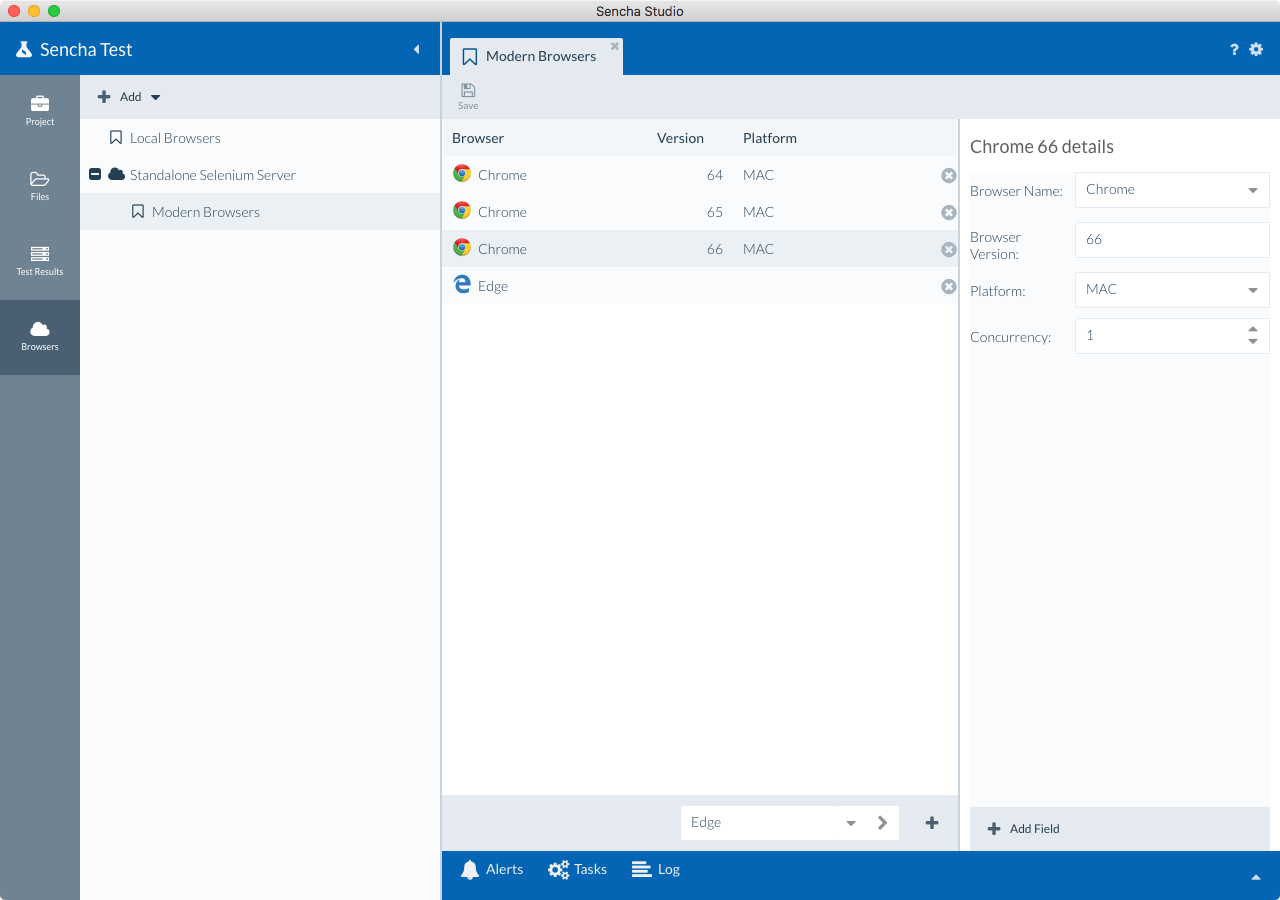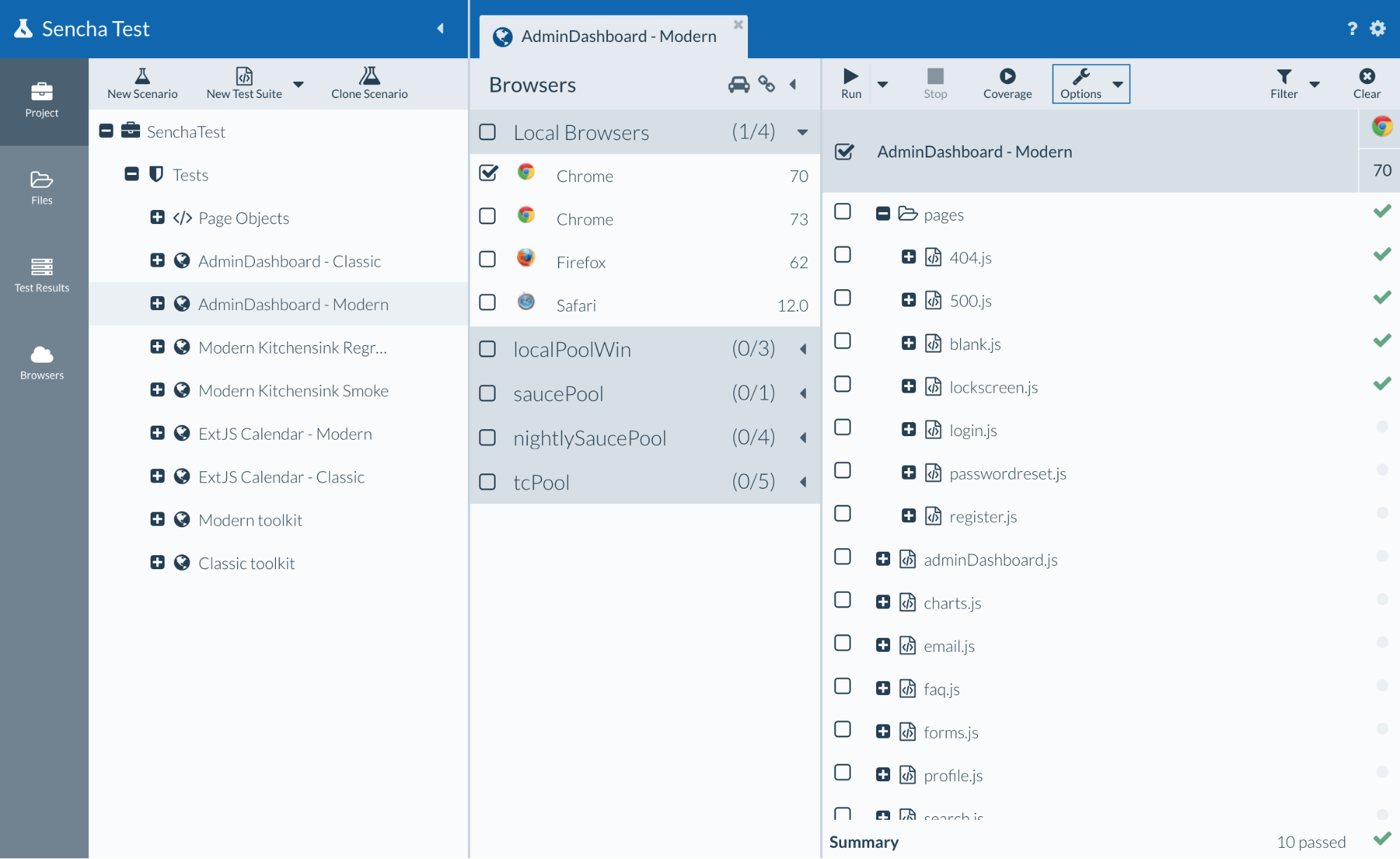Announcing Sencha Test 2.2.1 GA

We’re excited to announce the release of Sencha Test 2.2.1. With more than 75 enhancements and bugfixes, Sencha Test 2.2.1 also delivers new API methods for Ext JS components for improved unit and end-to-end testing of Ext JS applications. You also now have access to part of the test suite that we use for end-to-end testing of Ext JS applications like Kitchen Sink and Admin Dashboard. Sencha Test is now part of Ext JS Enterprise edition. We look forward to all Sencha Test customers and Ext JS Enterprise customers using the new Sencha Test capabilities.
Highlights of Sencha Test 2.2.1
New enhancements in this release include:
- New Future API methods – “doubleClick”, “rightClick” to more easily interact with Ext JS components and HTML elements, and “getRecord” for obtaining the record object from DataView items
- Enhanced Event Recorder to capture all steps for text-based column filter menu actions
- Updated browser farm APIs to show only valid browser and OS combinations
- Enhanced Sencha Test CLI to use a custom proxy port for in-browser tests
- Updated Inspect capability to create robust test cases
- Download and use a robust set of test suites for Ext JS Kitchen Sink examples
- Latest ChromeDriver for the embedded Selenium Server
- Improved documentation and guides
Try It Out
- Customers can download Sencha Test by visiting the Support portal
(Note: Sencha Test CLI is available for download in nightlies section)
- Download the free 30-day trial of Sencha Test 2.2.1
- Quickly get started with a robust set of test suites for the Ext JS framework
- Read the guides and documentation
What’s New in Sencha Test 2.2.1
New Future API methods – “doubleClick”, “rightClick” for Ext JS components and HTML elements, and “getRecord” for DataView Items
Sencha Test 2.2.1 adds new API methods to support the double-click and right-click operations of Ext JS components. There is also a new “getRecord” API for working with the Ext JS DataView component.
The example below shows how to perform a right-click operation on a grid row, which will fire the grid items context menu event, if configured on the grid:
.rowAt(3)
.rightClick();
The example below shows how to perform a double-click operation on a grid row, making the row editable if configured with the Row Editor plugin:
.rowAt(3)
.doubleClick();
The example below shows the new API for getting the underlying record of a DataView item:
.itemAt(3)
.getRecord()
.and(function (item) {
expect(item.data.record.companyName).toBe(‘Sencha’);
});
Enhanced Event Recorder to capture all steps for text-based column filter menu actions
Sencha Test Event Recorder tracks user actions and generates meaningful test code. The locator strategy for recording is enhanced allowing better handling of text based column filter menu actions.
Updated browser farm APIs to show only valid browser and OS combinations
A browser farm is typically made up of a collection of virtual machines, each with a particular version of a browser installed. Rather than spending time and effort manually configuring and maintaining an internal browser farm, hosted browser farms such as Sauce Labs already have the infrastructure configured on their end, and you are able to quickly and easily leverage their various browser instances to test your web applications. The browser farm APIs are updated in this latest release to provide valid browser and OS combinations available.

Enhanced Sencha Test CLI to use a custom proxy port for in-browser tests
Sencha Test CLI (STC) provides integration with Continuous Integration (CI) servers like Jenkins and TeamCity, providing the ability to execute tests for a scenario from the command-line.
By default, STC uses port 8000 when running In Browser tests. Some customers may require their app to be running on a particular hostname and port number in order for CORS requests to complete successfully, meaning the port number for the In-Browser test runner via STC should be configurable.
In this release, STC has a new command line switch that allows the built-in proxy port to be defined for In-Browser tests, for example:
stc run -s test/myscenario -p embedded --proxyPort 1840
Updated Inspect capability to create robust test cases
The Inspect capability allows users of Sencha Test to easily locate components in a running Ext JS Application. With Sencha Test 2.2.1, we have enhanced the Inspect Wizard to help you create more robust locators.
Download and use a robust set of test suites for Ext JS examples
Before we release each version of our Ext JS framework and examples, we run through more than 70K test cases across 15 browser combinations multiple times. We also perform end-to-end testing of framework applications with thousands of test cases.
You now have access to some of those end-to-end test cases in this GitHub repository. This repository provides you with various examples, including a set of test cases for hundreds of component examples in the Kitchen Sink. Just clone the repository and open the “SDK-Test” subfolder in Sencha Test to run through those test cases.

Support for new Chrome versions
This release includes an updated version of ChromeDriver for the embedded Selenium Server, enabling Sencha Test to fully work with the most recent versions of Google Chrome.
Try It and Share Your Feedback
Download Sencha Test 2.2.1 and test applications developed using Ext JS, ExtReact, React or Angular apps. Please share your feedback and report bugs in the Sencha Test forum. We look forward to reading your comments.

We’re excited to announce the official release of Rapid Ext JS 1.0, a revolutionary low-code…

The Sencha team is pleased to announce the availability of Sencha Architect version 4.3.6. Building…

Sencha, a leader in JavaScript developer tools for building cross-platform and enterprise web applications, is…












